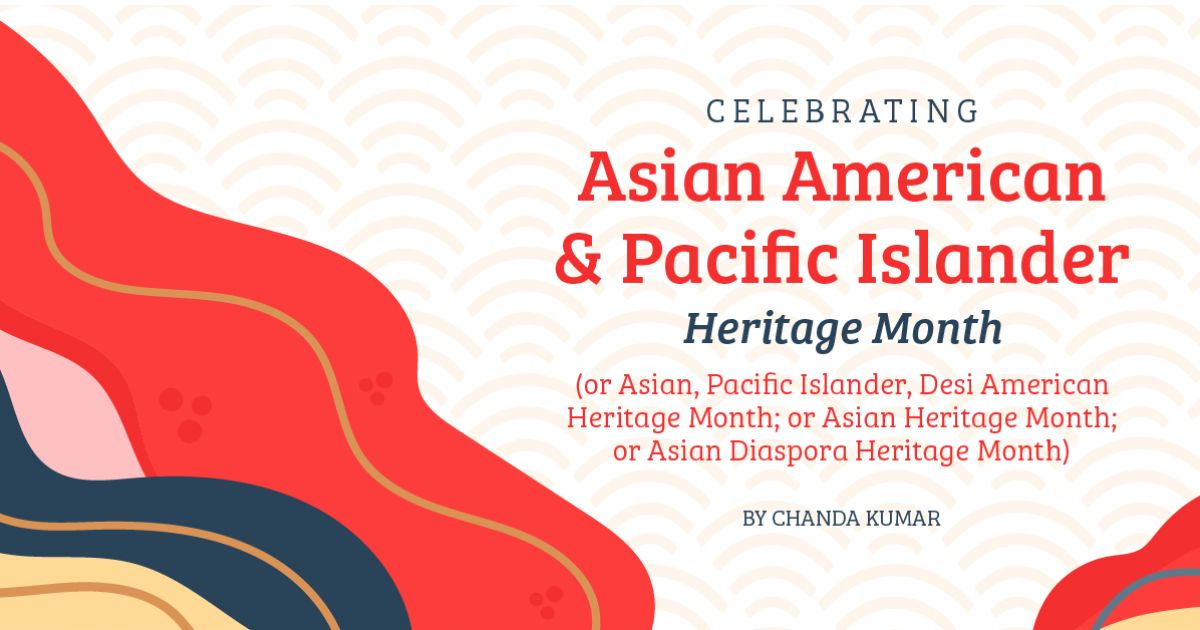Justin Timberlake's “It’s gonna be me,” meme, Star Wars Day, Mother’s Day–there is a lot to celebrate in May. But as an Indian woman, to me May also means it’s Asian American and Pacific Islander Heritage (AAPI) Month.
You might hear different names for this month. To accurately reflect the experiences of all Asian individuals, a few alternatives have been created because this month celebrates such a diverse group of people.
Before you consider which name works best for your organization or brand, you need to understand what we are celebrating and why.
Who Is Included?
The U.S. Census defines Asian as “a person having origins in any of the original peoples of the Far East, Southeast Asia, or the Indian subcontinent including, for example, Cambodia, China, India, Japan, Korea, Malaysia, Pakistan, the Philippine Islands, Thailand, and Vietnam.” Clearly, this diverse category includes many ethnicities, languages, traditions, histories, and geographic regions.
What are the New Names?
The new, alternative names for the month include Asian, Pacific Islander, Desi American (APIDA) Month; Asian Heritage Month; and Asian Diaspora Heritage Month.
What’s the Rationale?
When I first learned about AAPI month, I could not fully associate myself with the acronym. South Asians (who generally include those from India, Pakistan, Bangladesh, Nepal, Bhutan, the Maldives, and Sri Lanka) are often not considered a part of the Asian American and Pacific Islander communities. For APIDA, the thought process behind adding “Desi American” to the original AAPI name is to represent South Asian individuals. "Desi" comes from a Sanskrit word which means the native of a "desh," or country.
Dropping “American” from the alternative versions of the official name is intentional because of the painful history of discrimination and racism against people of Asian ancestry.
Which Should You Use?
There’s no easy answer. While the official name is AAPI Month, many communities have preferences due to their complex history and self-identity. Because of a lack of representation and awareness, the significance of these names can be hard to understand without consulting members of those subgroups. However, there are two overarching, known facts to consider when making your decision:
- There is a lack of Asian representation in marketing and advertising.
- People like to see themselves in the faces and voices of the brands they support.
Knowing your audience and their experiences is vital to the success of your brand. At LMD, a big part of any project we do is allocating time to market research so that we know who is on the receiving end of our clients’ work. If your audience includes Asian people, then you need to understand the racial, cultural, and geographical diversity of this category and showcase people who look like your audience in your marketing. Being knowledgeable and intentional with your research can help you develop your brand and messaging more deliberately.
The absence of diversity in brand marketing is not a new problem. Representation and accessibility, in general, have often been an afterthought, which can lead to poor delivery and results. Keith Cartwright, creator of P&G’s “The Look” (WARC Guide to Brand Activism), said, “There is a clear omission by marketers in how they market to Black audiences. Their approach has been, for years, to build brands for white people first and then figure out how to adapt and talk to other markets later.” From this month onward, make it a point to understand who your audience is and what their barriers are when developing your brand.
Need help reaching diverse target audiences? Contact LMD.

